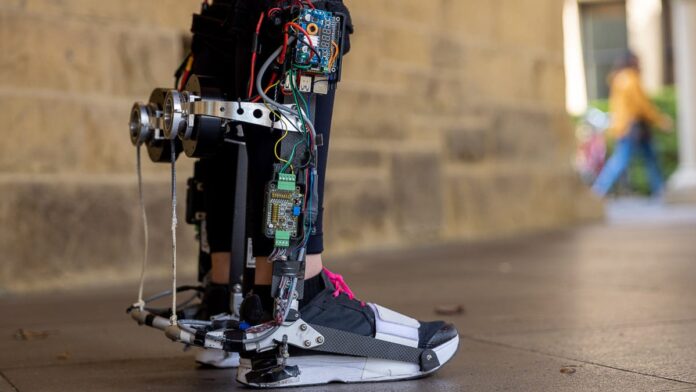[ad_1]
Researchers at Stanford University have invented an exoskeleton boot to help people with mobility problems walk and run faster. The device uses a Rasberry Pi computer, along with multiple sensors, a motor, and a motor controller to help users move without being tied down.
According to the Raspberry Pi website, the new mobility aid offers several advantages over currently available options. Instead of being an expensive, strapped and cumbersome full-body appliance, this device is worn like a boot and can be worn independently of another machine. Also, since the Raspberry Pi computer can run multiple threads of code simultaneously, it can process more complex movements while learning the uniqueness of human body movements.
When using the exoskeleton for the first time, users only need to walk for an hour for the computer to learn their movement patterns. Using data from sensors, the Raspberry Pi can optimize control in real time and deliver benefits within 15 minutes of use. The Raspberry Pi website reports that users walk about nine percent faster and spend 17 percent less energy when using the device. The researchers claim it’s the equivalent of “taking off a 30-pound backpack.”
The device has enormous potential not only for people with chronic disabilities, but also for the elderly, as they begin to experience decreased mobility later in life. Researcher Patrick Slade told The MagPi: “It will enable people to lead more active, independent and meaningful lives.”
More information about the new mobility exoskeleton is available at Nature.com.
Source: Raspberry Pi News
[ad_2]
